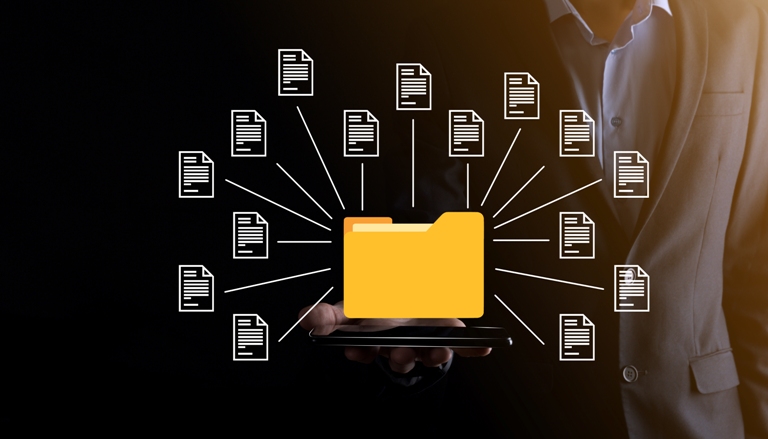Government agencies handle vast paperwork, from policies and legal documents to citizen records and financial reports. Ensuring these documents are accurate, accessible, and compliant is crucial for audits. Without a structured system, audits can become time-consuming and prone to errors.
A document management system for government agencies helps streamline this process by organizing, securing, and making documents easily retrievable. It eliminates manual errors, enhances transparency, and ensures compliance with regulatory requirements.
Let’s explore why government agencies need an audit-ready document management system and how it improves efficiency.

What Makes a Document Management System ‘Audit-ready’?
An audit-ready document management system (DMS) is designed to maintain records in a structured and compliant manner. It ensures:
1. Secure storage – Prevents unauthorized access and protects sensitive data.
2. Easy retrieval – Allows quick access to documents during audits.
3. Version control – Tracks changes and maintains a record of document modifications.
4. Compliance management – Ensures adherence to government regulations.
5. Automated reports – Generates audit trails and logs for transparency.
A government agency without an audit-ready system risks delays, errors, and potential non-compliance penalties.
Challenges of Traditional Document Management in Government Agencies
Many government offices still rely on paper-based documentation or outdated digital storage systems, leading to several issues:

1. Time-consuming Audit Preparation
- Manually searching for old records is slow and inefficient.
- Missing documents can delay audit completion.
2. Risk of Data Loss & Security Breaches
- Paper records can be lost due to fire, theft, or misplacement.
- Unsecured digital files may be vulnerable to cyber threats.
3. Compliance & Legal Risks
- Inconsistent record-keeping can lead to non-compliance with regulations like the RTI (Right to Information) Act and GDPR.
- Lack of proper documentation can result in legal challenges.
4. Lack of Transparency & Accountability
- Paper trails can be easily manipulated or altered.
- No clear record of document modifications or approvals.
To overcome these challenges, a document management system for government agencies is essential.
Key Benefits of an Audit-ready DMS for Government Agencies
1. Automated Record-keeping & Compliance Management
A DMS ensures that all documents are stored in a structured format, making it easy to retrieve them when needed.
- It automates document classification based on type, department, or date.
- This keeps records updated to meet legal and regulatory standards.
- It provides audit trails that track who accessed or modified a document.
2. Faster & More Efficient Audits
A centralized DMS allows auditors to quickly locate documents without sifting through paper files. Features like:
- Advanced search options (by keyword, date, or category)
- Instant retrieval of historical records
- Exportable audit logs for easy reporting
- Reduce the time spent on audits, leading to increased productivity.
3. Enhanced Security & Controlled Access
Government agencies deal with sensitive information. A DMS provides multiple layers of security, including:
- Role-based access controls (ensuring only authorized personnel can access certain documents).
- Data encryption to protect against cyber threats.
- Automated backups to prevent data loss.
This ensures that documents remain confidential and tamper-proof.
4. Reduced Costs & Paper Waste
Shifting from paper-based records to digital documents can save agencies:
- Costs associated with printing, storing, and transporting physical files.
- Office space is required to maintain paper archives.
- Resources spent on manual record-keeping.
A DMS saves money and promotes an eco-friendly approach by reducing paper usage.
5. Improved Transparency & Accountability
An audit-ready DMS maintains a clear history of document changes, ensuring transparency in government operations. It:
- Tracks who created, modified, or approved a document.
- Ensures adherence to governance policies.
- Helps with easy public record access under RTI laws.
This helps build trust between the government and citizens.

How to Implement an Audit-ready DMS in Government Agencies
To successfully implement a document management system for government agencies, follow these steps:
Step 1: Assess Document Management Needs
- Identify the types of documents that require digital storage.
- Determine compliance requirements based on regulatory policies.
Step 2: Choose the Right DMS Solution
- Look for features like automated indexing, role-based access, and version control.
- Opt for cloud-based storage for better accessibility.
Step 3: Digitize & Organize Existing Records
- Scan and upload important documents into the DMS.
- Categorize documents for easy retrieval.
Step 4: Train Employees & Establish Best Practices
- Educate staff on using the DMS effectively.
- Set guidelines for document uploads, approvals, and retrieval.
Step 5: Monitor & Update the System Regularly
- Conduct regular data backups and security audits.
- Upgrade software to ensure compliance with new regulations.
Conclusion
With increasing digital transformation in governance, an audit-ready document management system for government agencies is no longer a luxury but a necessity. It enhances efficiency, reduces costs, strengthens security, and ensures compliance with regulations.
By adopting a DMS, government offices can streamline operations, ensure seamless audits, and build greater trust with citizens. Investing in the right system today will create a more efficient and transparent future.










